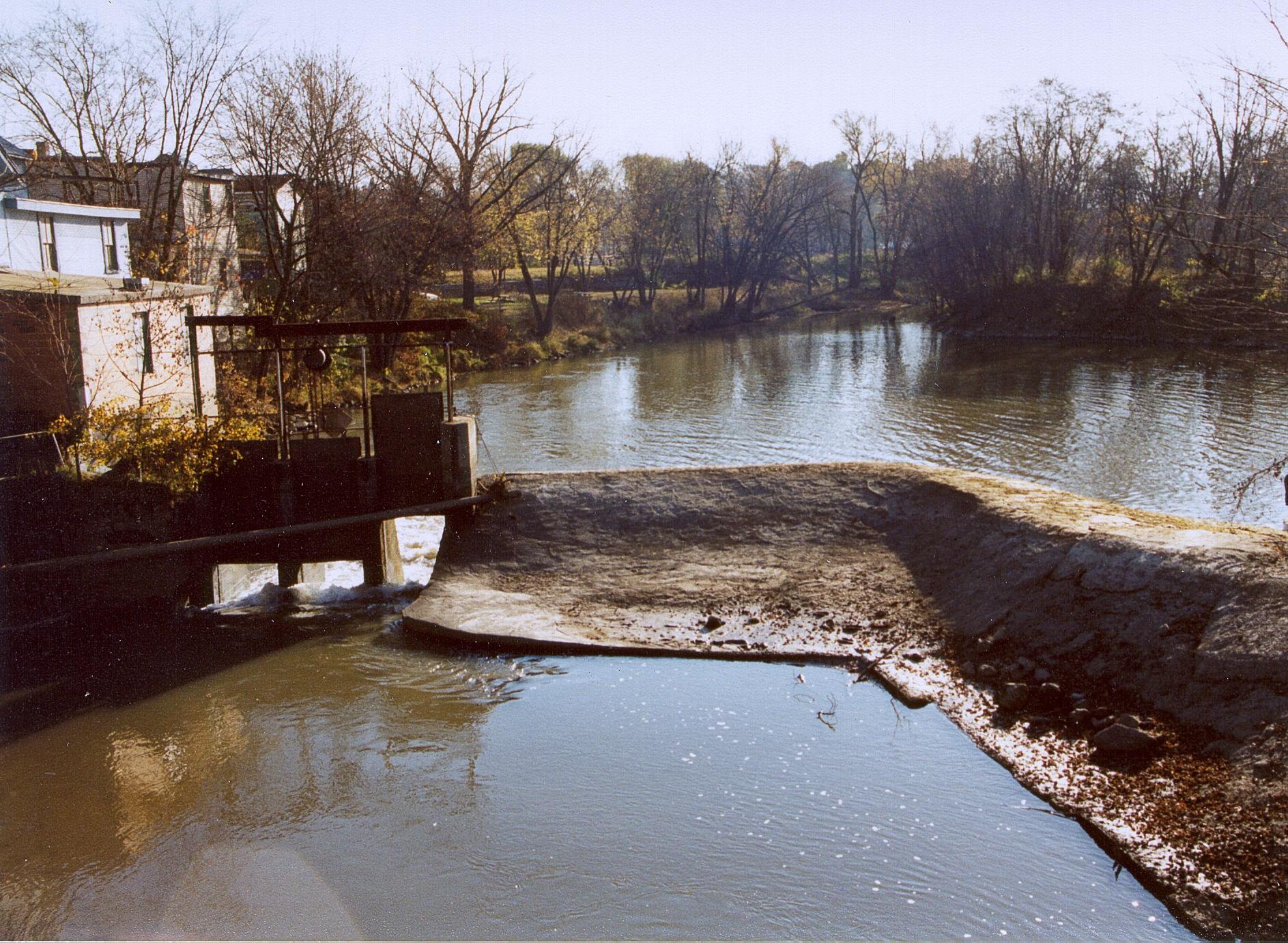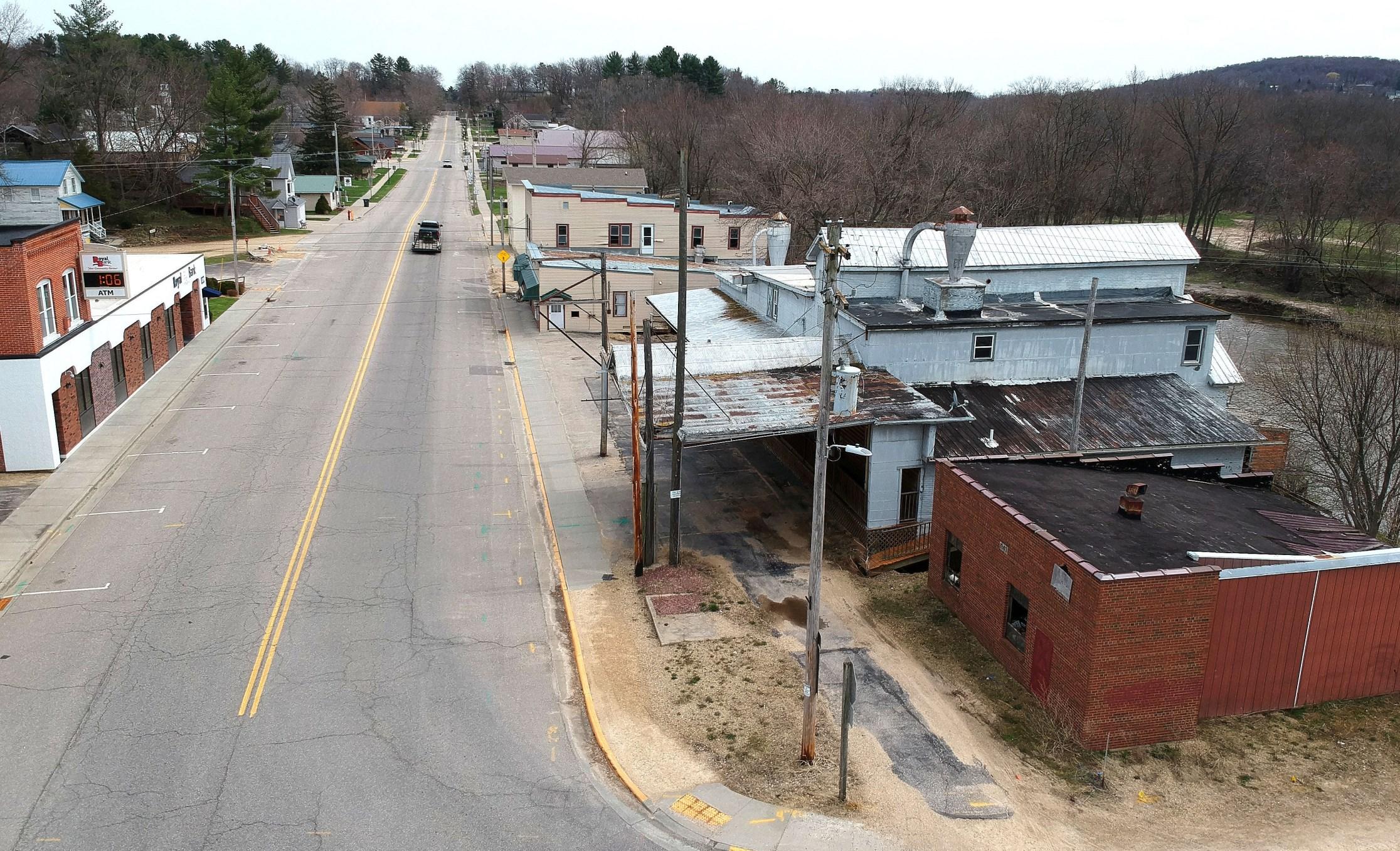
6 minute read
ABrief History of LaValle, Wisconsin
Located in the south-central part of LaValle Township, on Highways 33 and 58, the village of LaValle got its name from the French term for “the valley”. Native Americans were the first to discover the lands surrounding the confluence of the Big and Little Baraboo Rivers, and established a settlement there. It was purported to be a rendezvous for the Ho Chunk from the Upper Baraboo Valley.
The first settlers arrived around 1849, drawn by the potential for good water power. J.F. Hamlin, saw that potential, and purchased the land upon which the village of LaValle would eventually stand. Hamlin, and a partner, Solon Rushmore, began construction of a dam and sawmill in 1849, with equipment being installed the following spring. The first lumber turned out by the mill went to construct a home for Hamlin.
Butterfield’s 1880 History of Sauk County notes that, “The early growth of the place was necessarily slow, situated as it was in a dense wilderness, scarcely accessible to ordinary road wagons. But the pioneer’s first pathway is always rough, and he is thankful if he can but discern the outlines of even an Indian trail.”
In 1864, J.F. Sanford purchased the mill property and added a flour-barrel manufacturing factory, which also later turned out broom handles. A large three-story grist mill with three grinding stones, was added to the facility in 1869, so villagers would no longer have to travel to Reedsburg for flour.
The old sawmill was retrofitted in 1874 to produce barrel staves. A new building in 1876 housed a steam engine to power the equipment. It burned in 1878, and the business was moved back to the old sawmill building. Five hundred staves per hour were produced–most being shipped to Chicago for flour and pork barrels. The surrounding woodland provided an ample supply of basswood and oak, which farmers were glad to supply, thereby also clearing land for crops.
By 1855, the little village was sufficiently populted that a school was begun in a small shanty. A year later, a more commodious structure was built. By
1879, there were 127 pupils in the district.
A post office was established in LaValle in 1856, with mail being brought from Reedsburg by local citizens. Area residents drew straws to see who would assume that duty for the following two weeks. Some were not happy with this arrangement, so later a full-time mail carrier was hired. When the railroad arrived in 1872, the mail service was transferred there.
With the arrival of the railroad, the little village grew proportionally. There were 4 hotels, 2 restaurants, 2 stockyards, poultry hatchery, livery stables, and general stores.
Methodist services were held in the shanty schoolhouse as early as 1856, and the Adventists also existed in limited numbers.
By 1880, the village of LaValle boasted 3 general stores, 2 hardware stores, drug store, grocery store, a hotel, 2 blacksmith shops, wagon shop, livery stable, shoe shop, millinery store, saloon, stave mill, grist mill, carding mill, a grade school, one church, Odd Fellows’ Lodge, Good Templar’s Lodge and one doctor.
Wm E. Schroeder opened a bakery in 1926, supplying the northwestern part of Sauk County with 400 loaves of bread daily. Baked goods were transported to Reedsburg, Loganville, Hillpoint, Ironton and Lime Ridge.
Electric generating equipment was installed in the mill in 1912, providing power to local customers. The mill burned in 1937, and was rebuilt. The plant continued to supply electricity until 1970.
During the latter half of the 20th Century, LaValle became a major destination for sportsmen and fishing enthusiasts with the construction of Lake Redstone in 1968, and Dutch Hollow Lake in 1972.
During the years of 2008 and 2018, major floods inundated the village, and the DNR determined that the buildings along the Baraboo River were too severely damaged for occupancy, and mandated that they be removed. In 2022, that mandate was accomplished.
May 2022

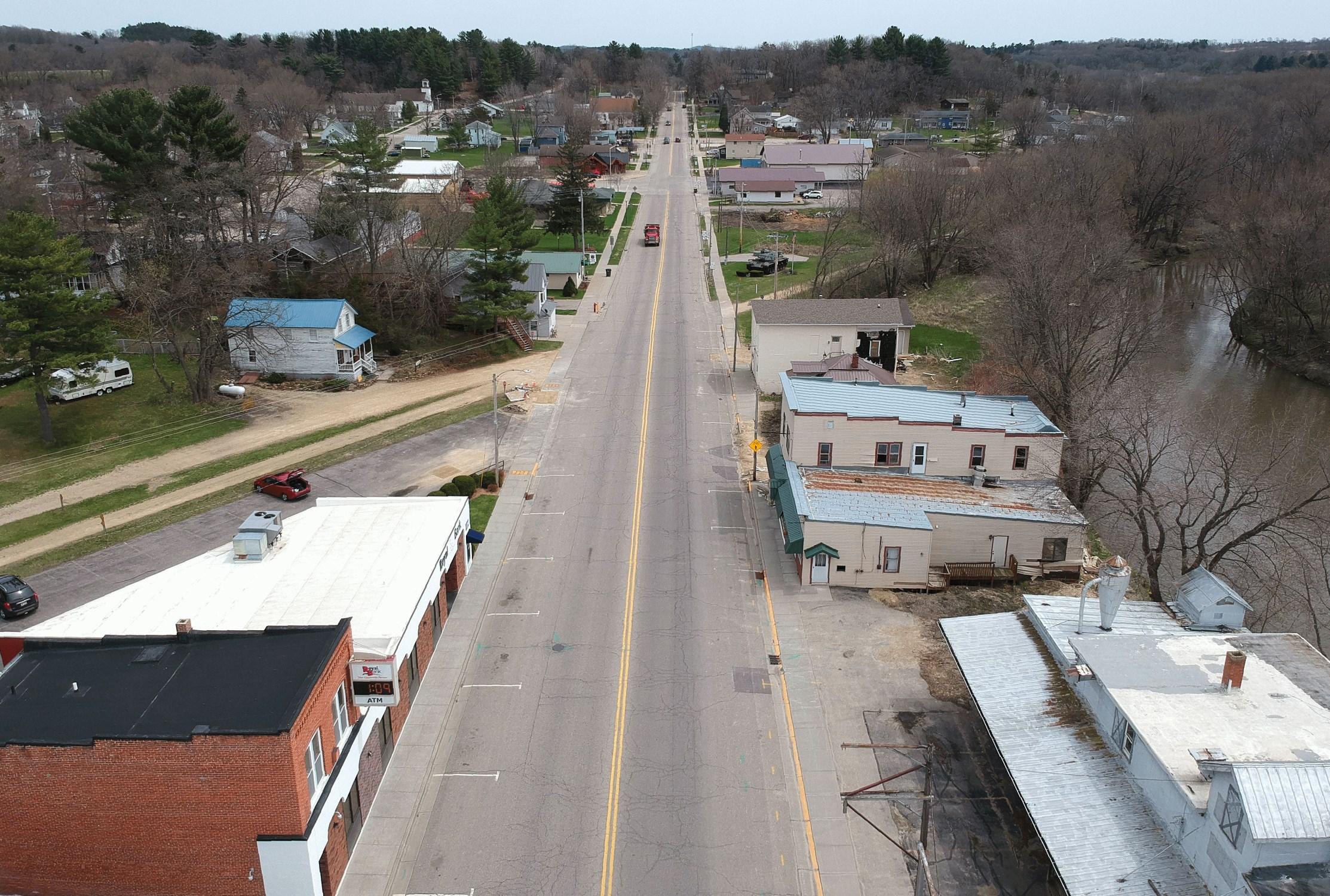


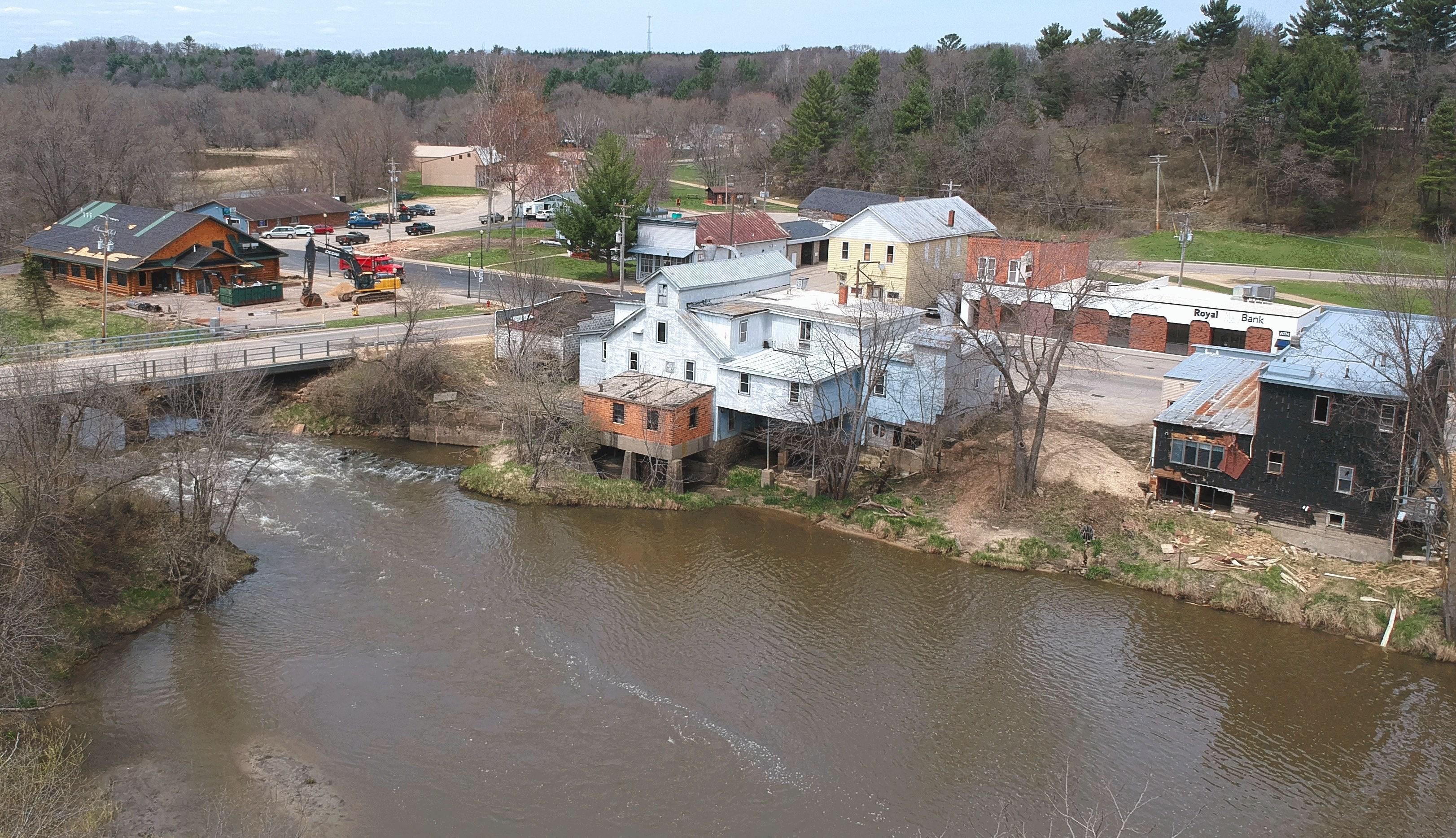

The Flood of 2008



Sauk County Historical Society Photo Collection

The Flood of 2018
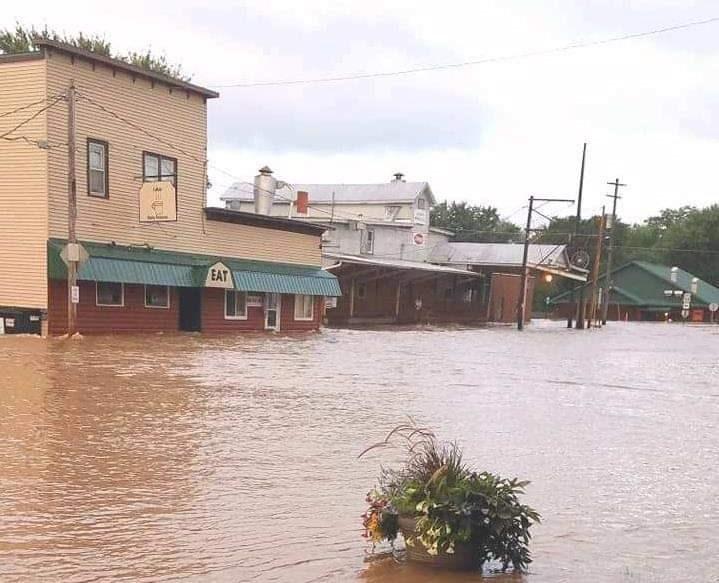
Because of the devastating floods of 2008 and 2018 which inundated the downtown area, the DNR mandated that the buildings along the river be removed. In June of 2022 that mandate was accomplished.


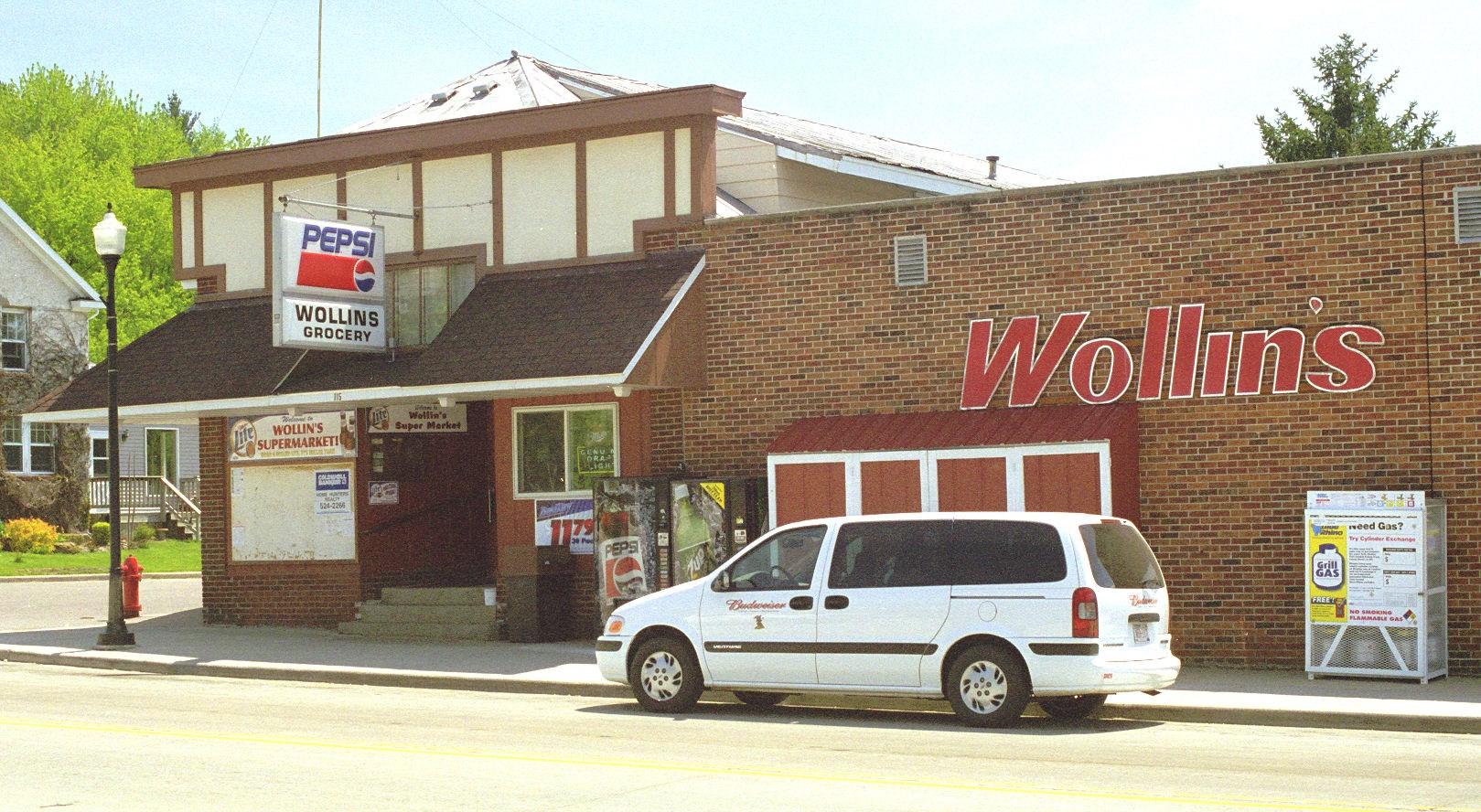

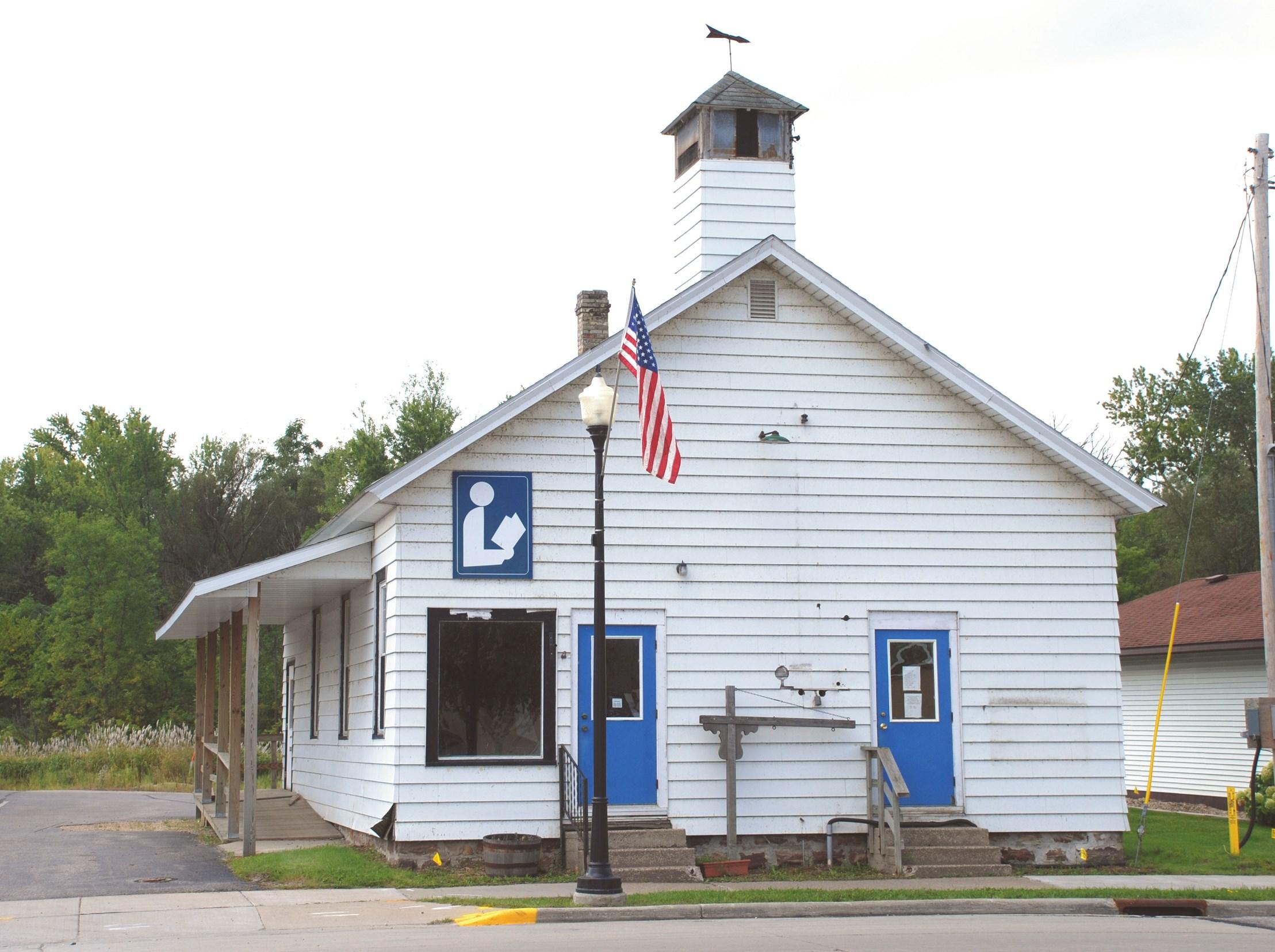

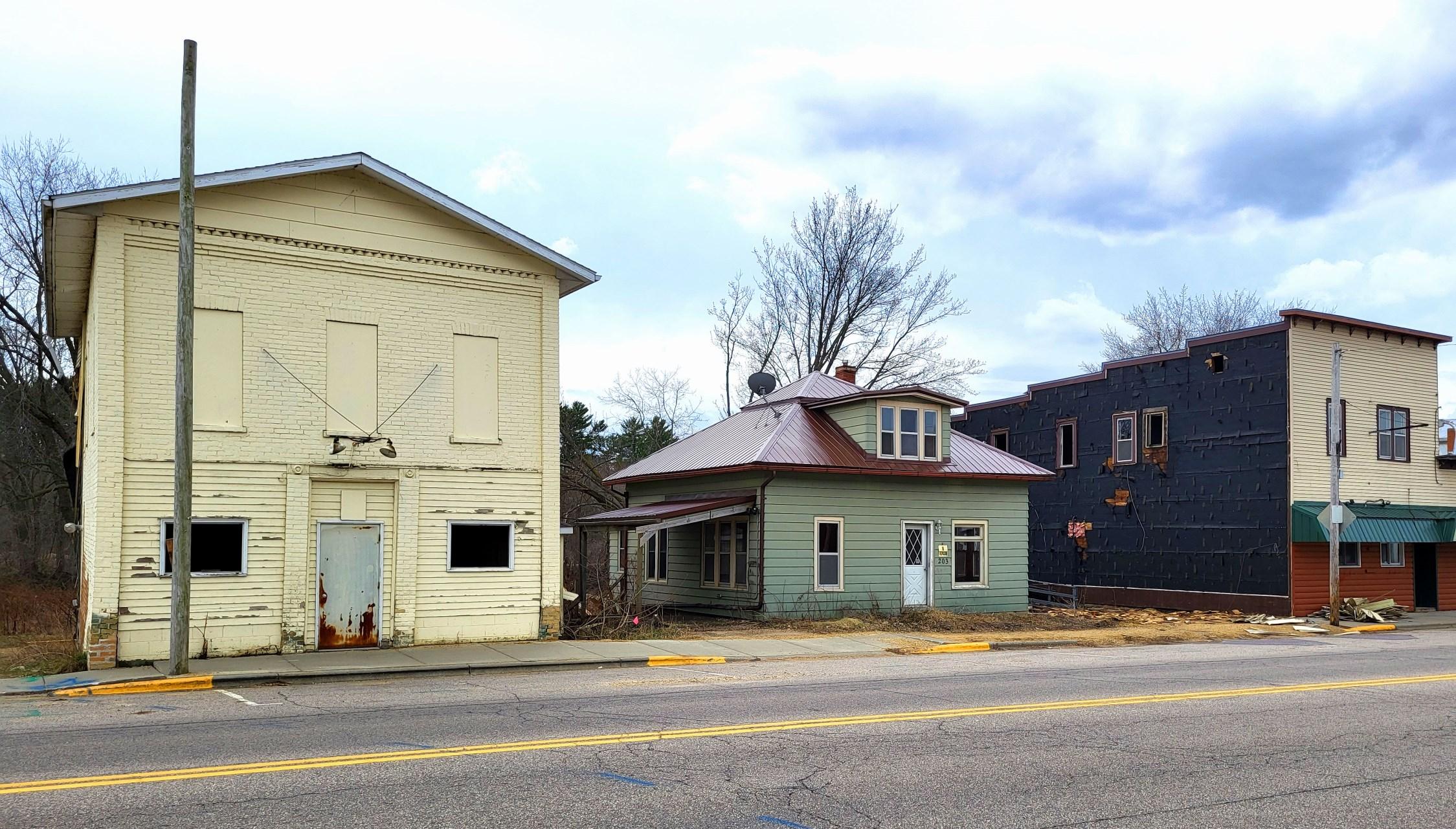





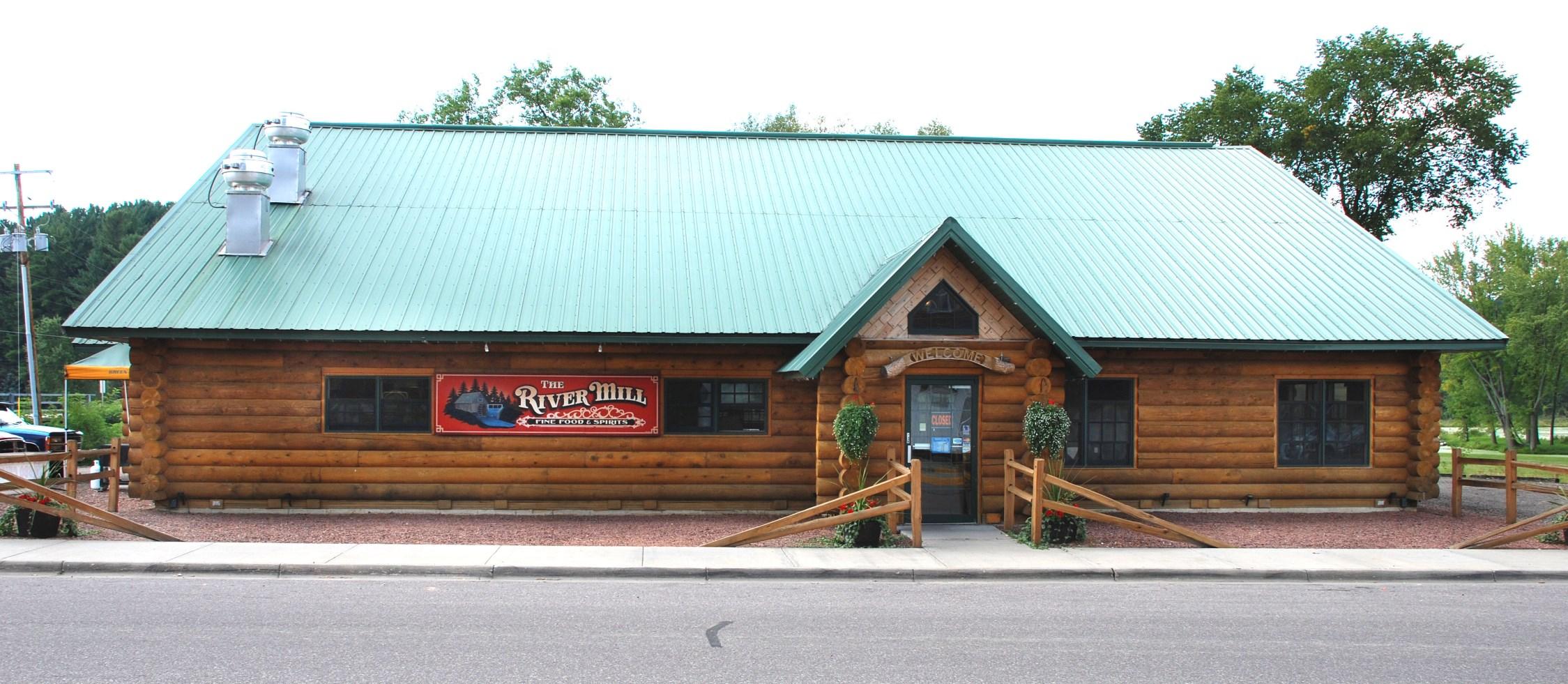

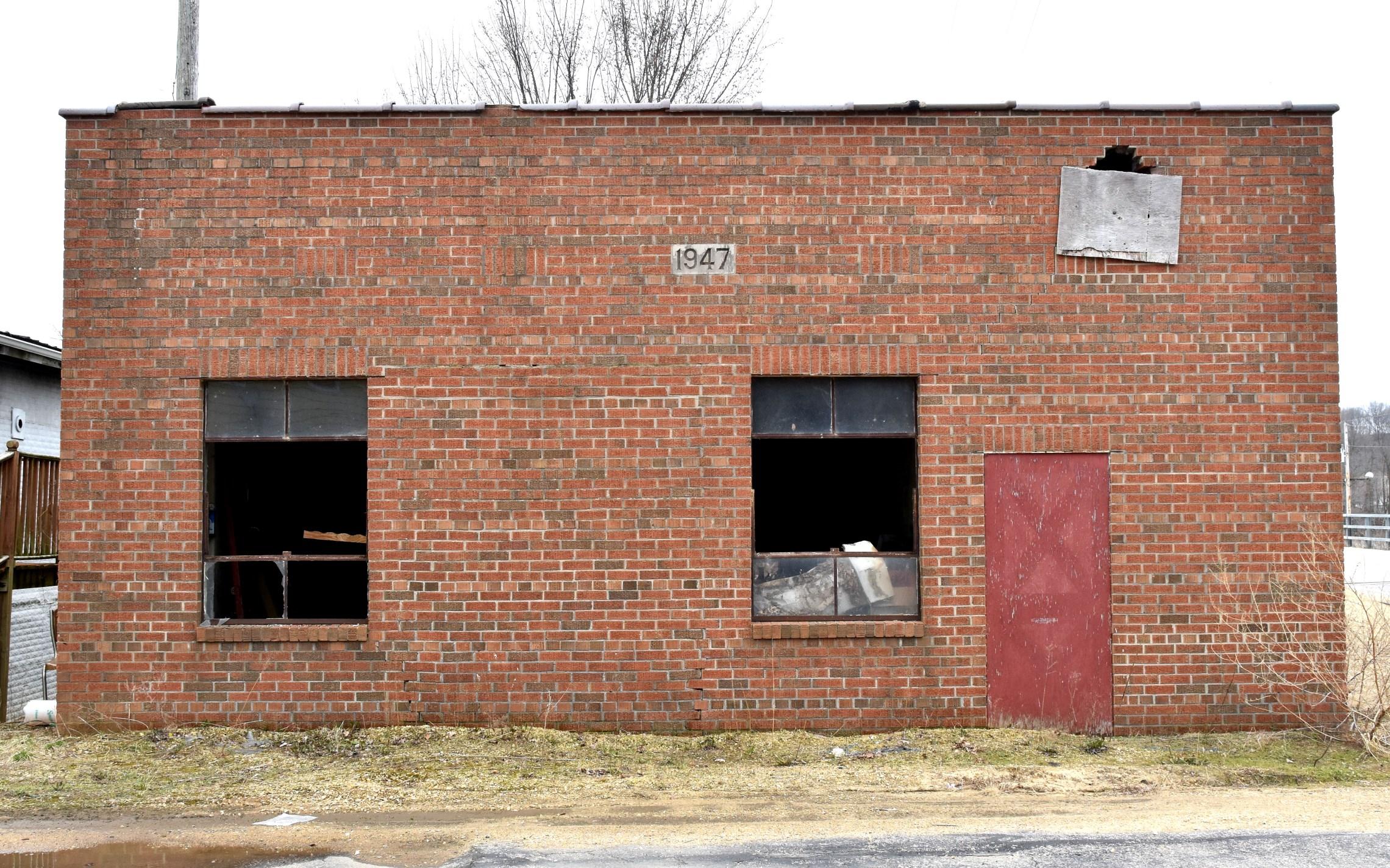
Old Library/Village Hall

The Village Hall and Library was constructed as a schoolhouse in 1890. In January of 1910 this building was removed from school house hill and set on a foundation to be used as a village hall and the back end was used as a fire engine house. This former school house was later divided as a library and village hall. The engine room had the floor raised and became part of the library. The building was removed in 2009 after the 2008 flood.




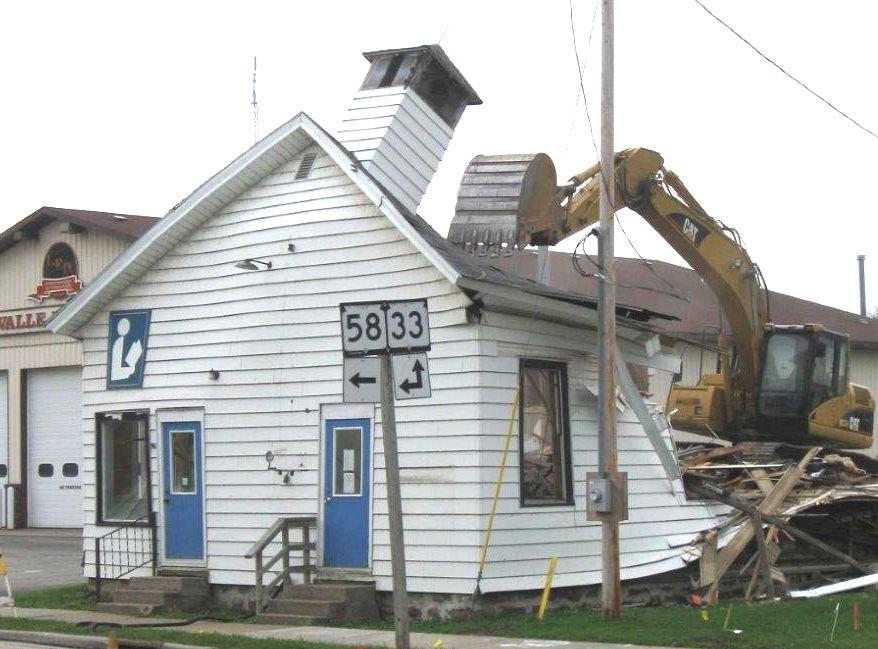
Wollin’s Grocery and later


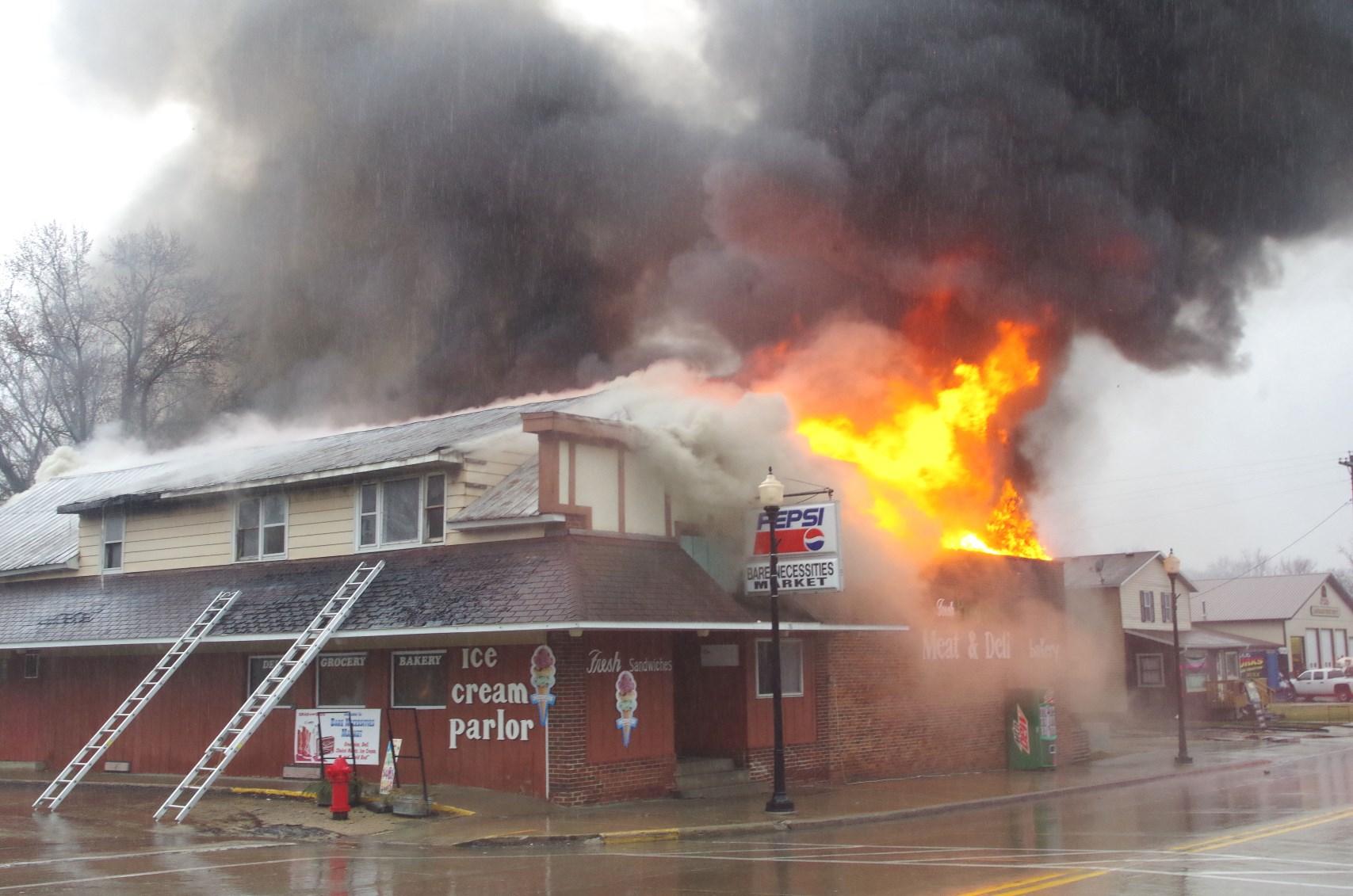
Bare Necessities Market


The remains of the store were removed and as of July, 2022, there has been no new construction on the site.


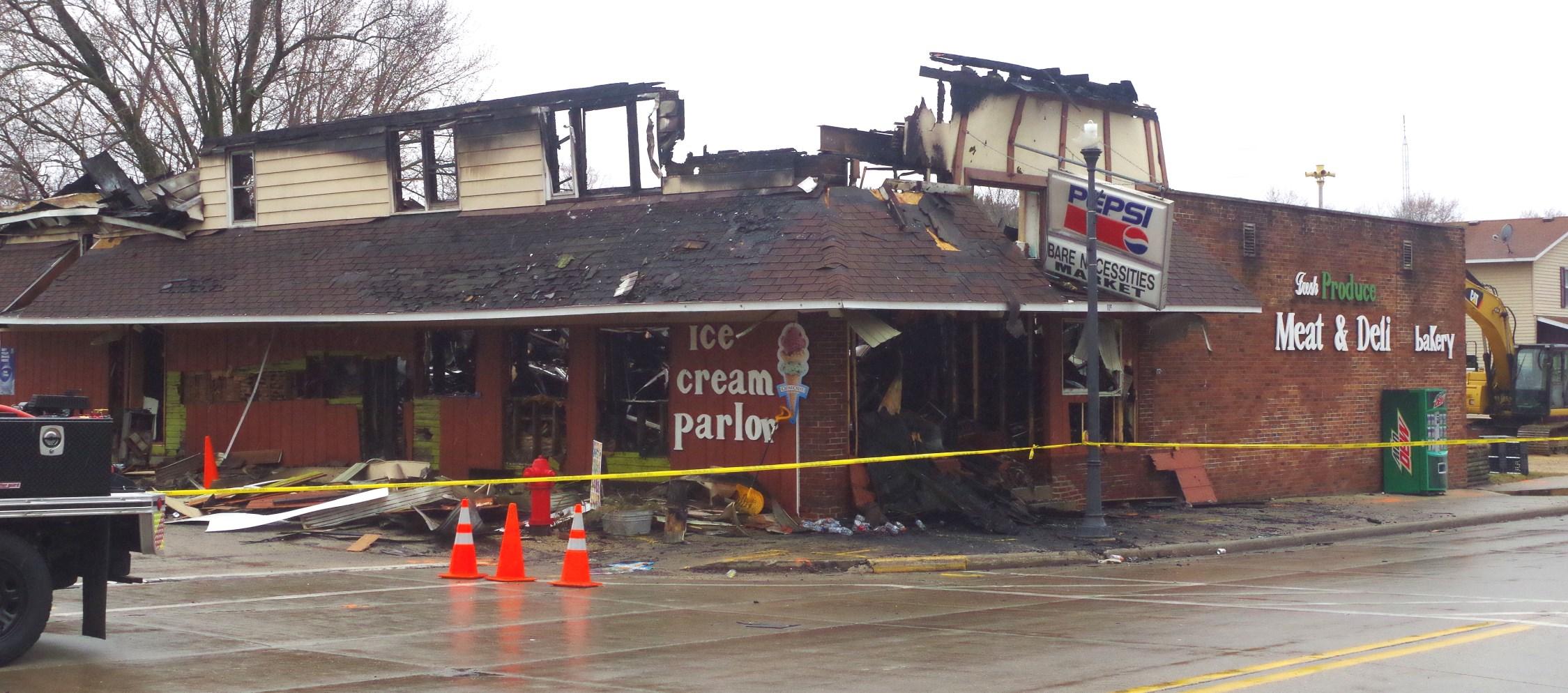

Old Legion Building
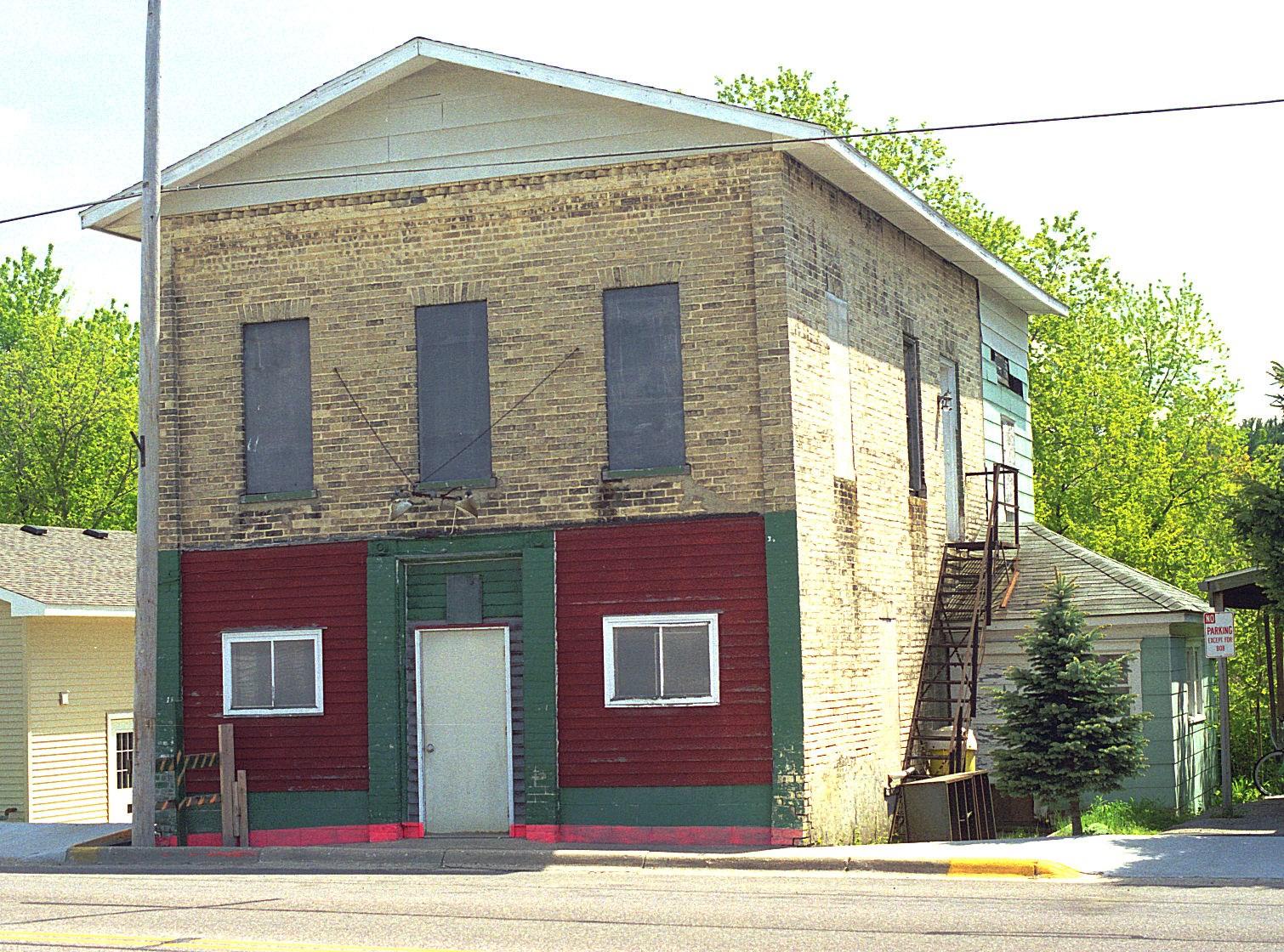

This building was once a bakery and grocery operated in 1926. The owner was William Schrorder and was called Schrorder’s Bakery and Daisy Restaurant. The bakery was equipped with a Superior Bakers Oven and had a daily output of 400 loaves of bread. Schroeder transported many of his baked goods by car to Reedsburg, Loganville, Hillpoint, and Lime Ridge. In 1930 it was sold to R.A. Nowayney and operated as the La Valle Bakery. After that, it was again a grocery store. In 1940 Carol Webb opened a printer's shop in the building, which published a local newspaper. It was closed in 1946. Hadley Blonien then opened a Firestone Service Store for one year. Upstairs, there was a three-unit apartment. Some of the other iterations of the building were: Mr. Neely offered guitar lessons there. The Legion purchased it in 1965, and Dan DeBaets purchased it in 1990s as a woodworking shop.

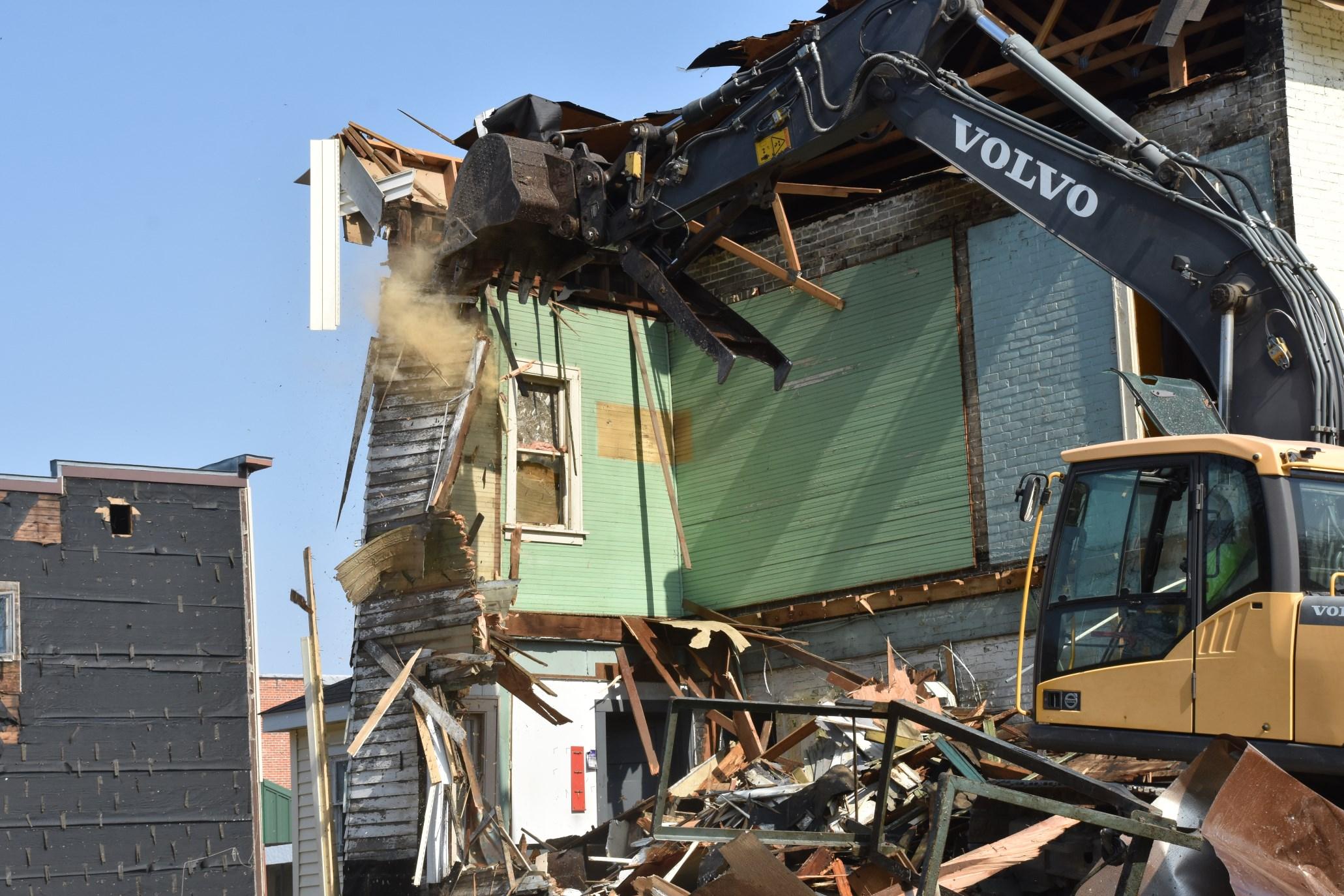





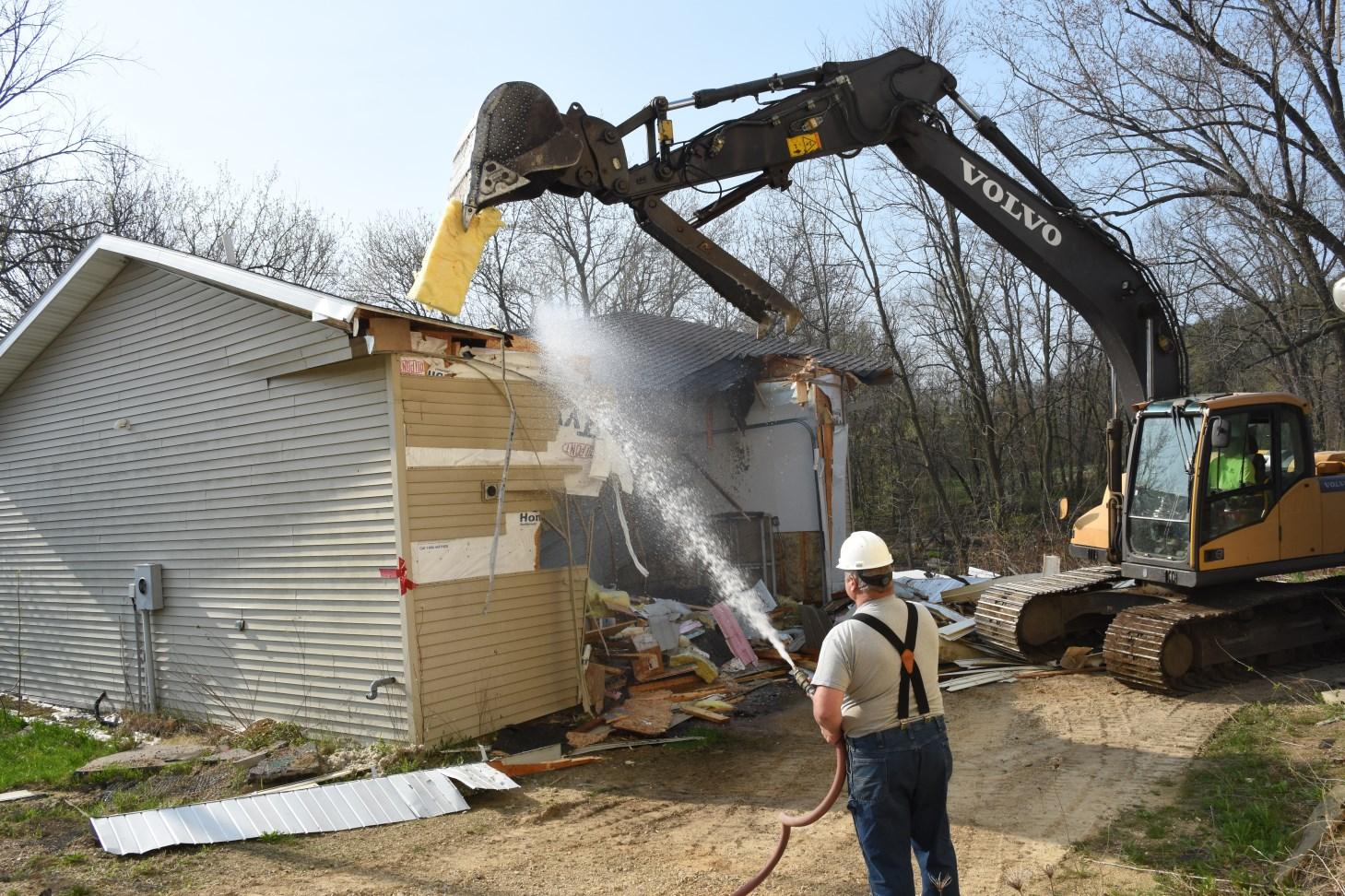
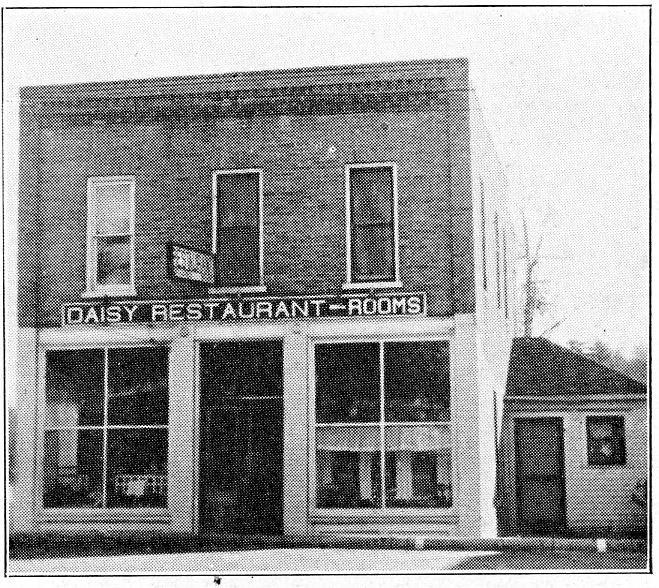
This building, here in 2009, has always been a private home which ended in the flood of 2018.
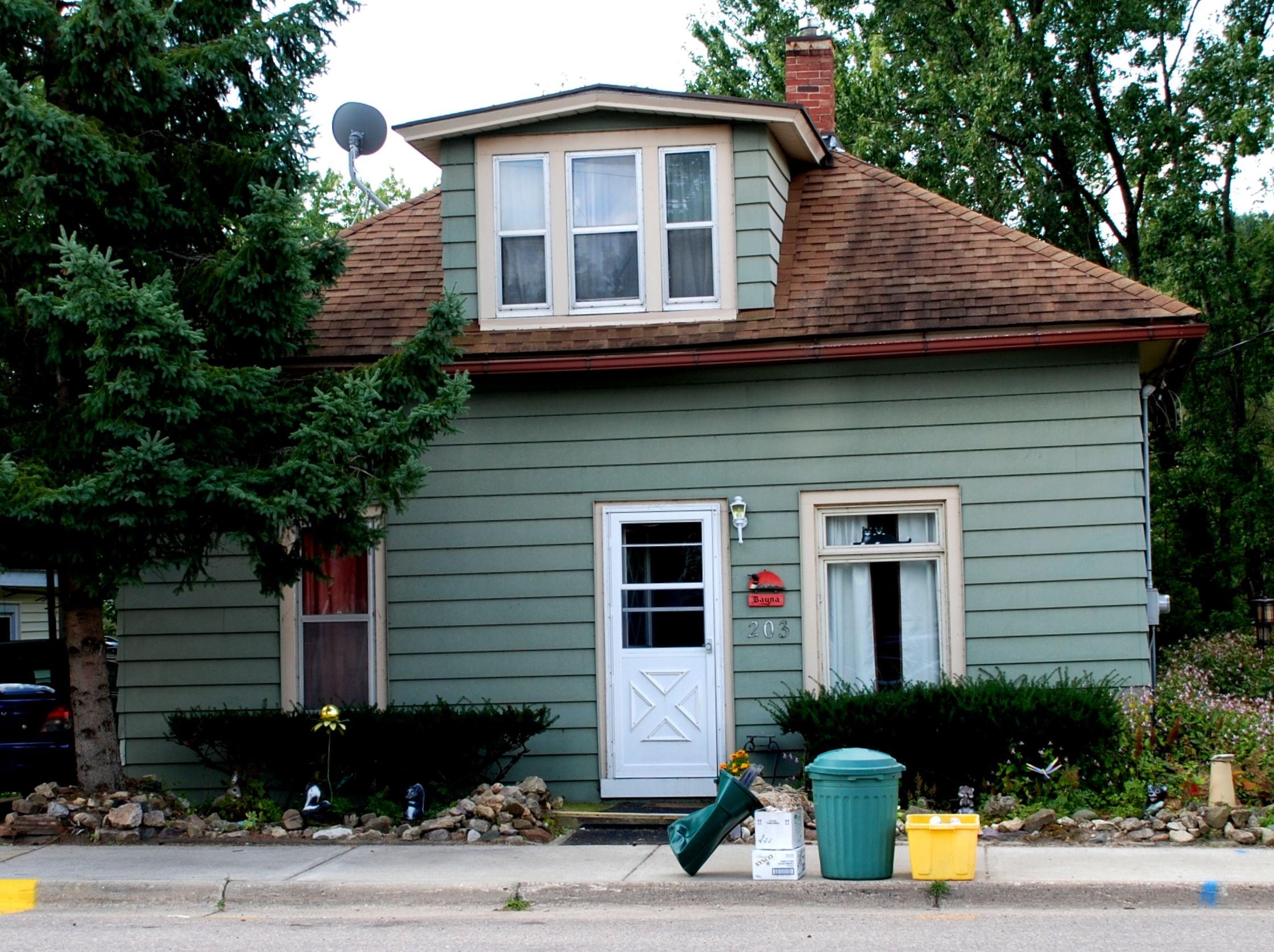


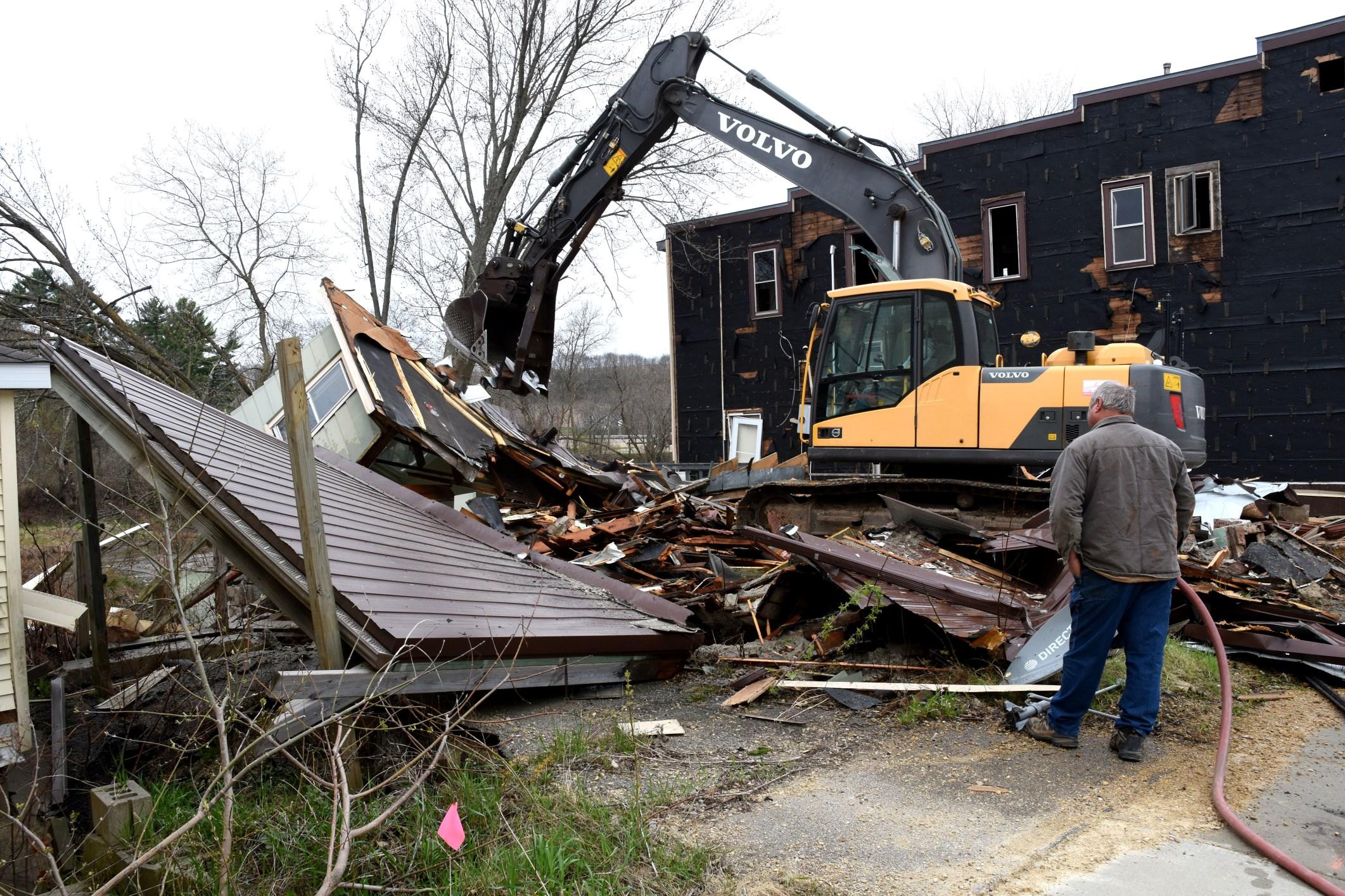


The brick bar on the left (1914 above & 1920s below) was one of the buildings that was torn down in June 2022. See the following pages.
Sauk County Historical Society Photo Collection
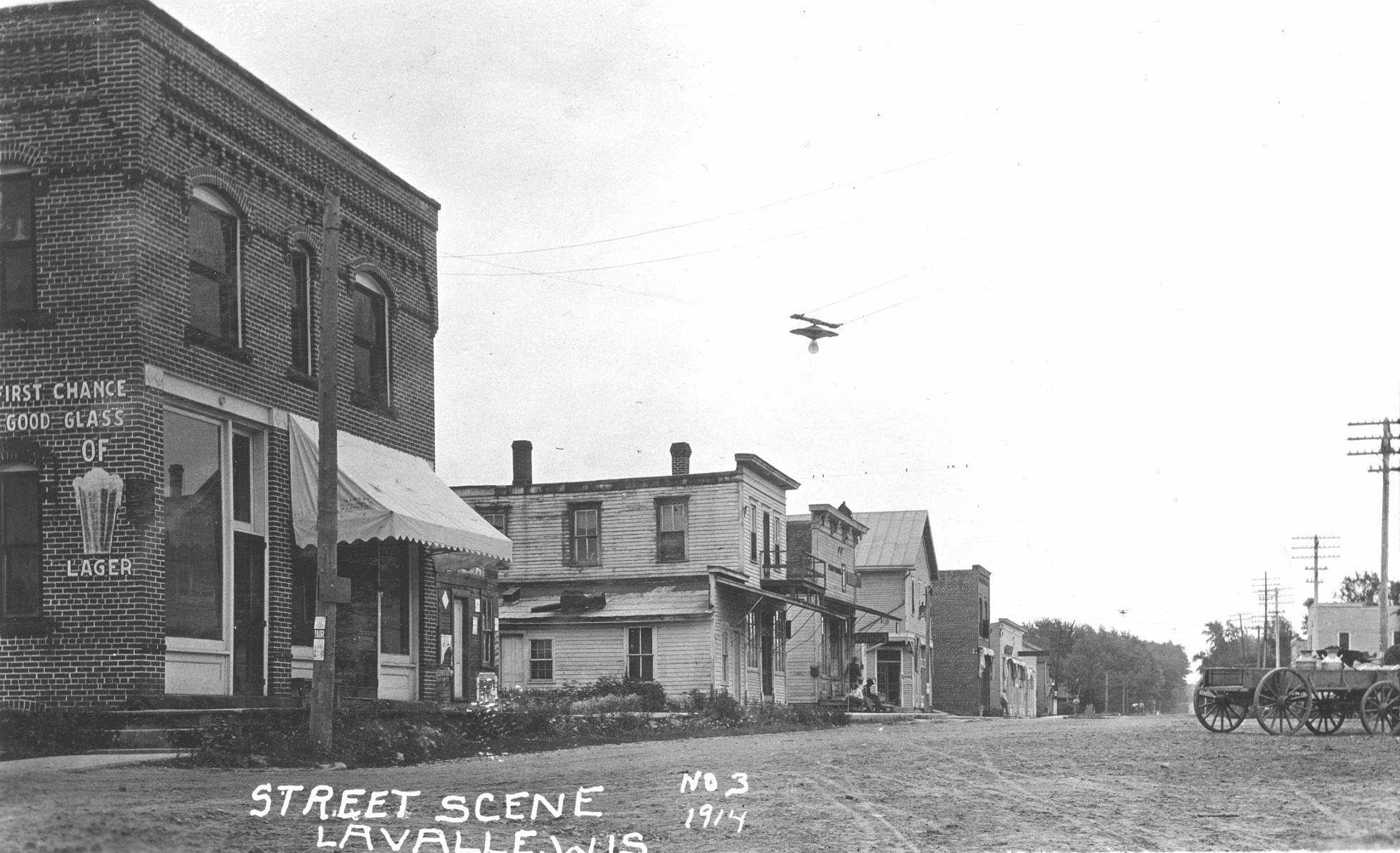



The building was taken down in June, 2022
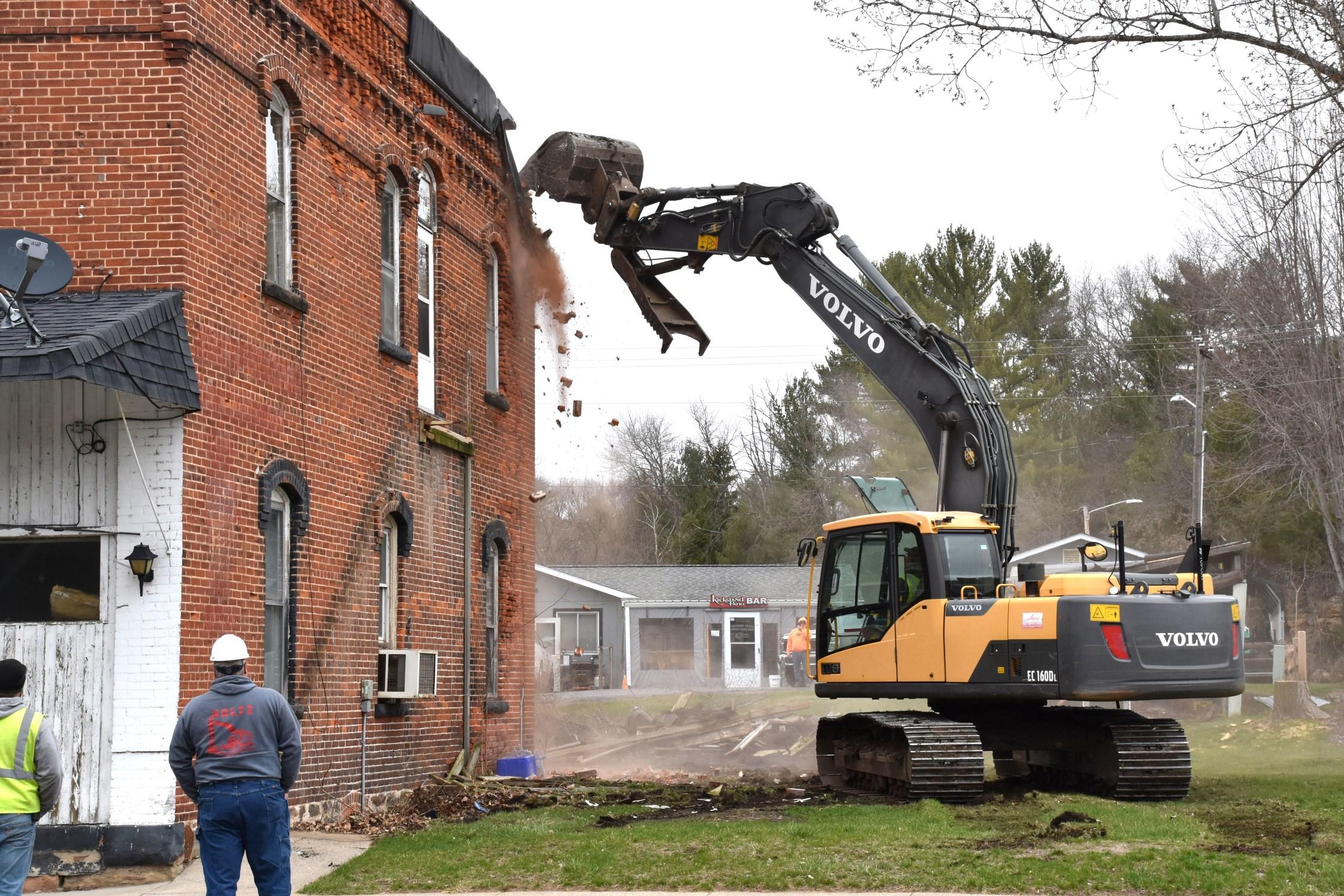
Old Kreutzmann Saloon

Farmers coming onto main Street from the creamery would see an interesting sign on Kreutzmann Saloon's west side, proclaiming, "Your First Chance to Have a Good Glass of Lager." On the east side of the building was painted, "Your Last Chance to Have a Good Glass of Lager ! "
The Riverside Tavern was owned by Fred Briggs from 1933 to 1940 when the Dehler Brothers purchased it. They sold it to George Mason and Billy Rabuck (Mason & Rabuck Tavern). They operated it until Fred Kinney took over in 1945 to 1948. Around 1949 the building was purchased by Wenz Mihlbauer and Fred Klett. In 1970 it was operated by Wenz Mihlbauer. They later built a new Tavern across the street in the early 1970s. The old building then contained two apartments through 2021.





YOUR FIRST CHANCE FOR A GOOD GLASS OF LAGER
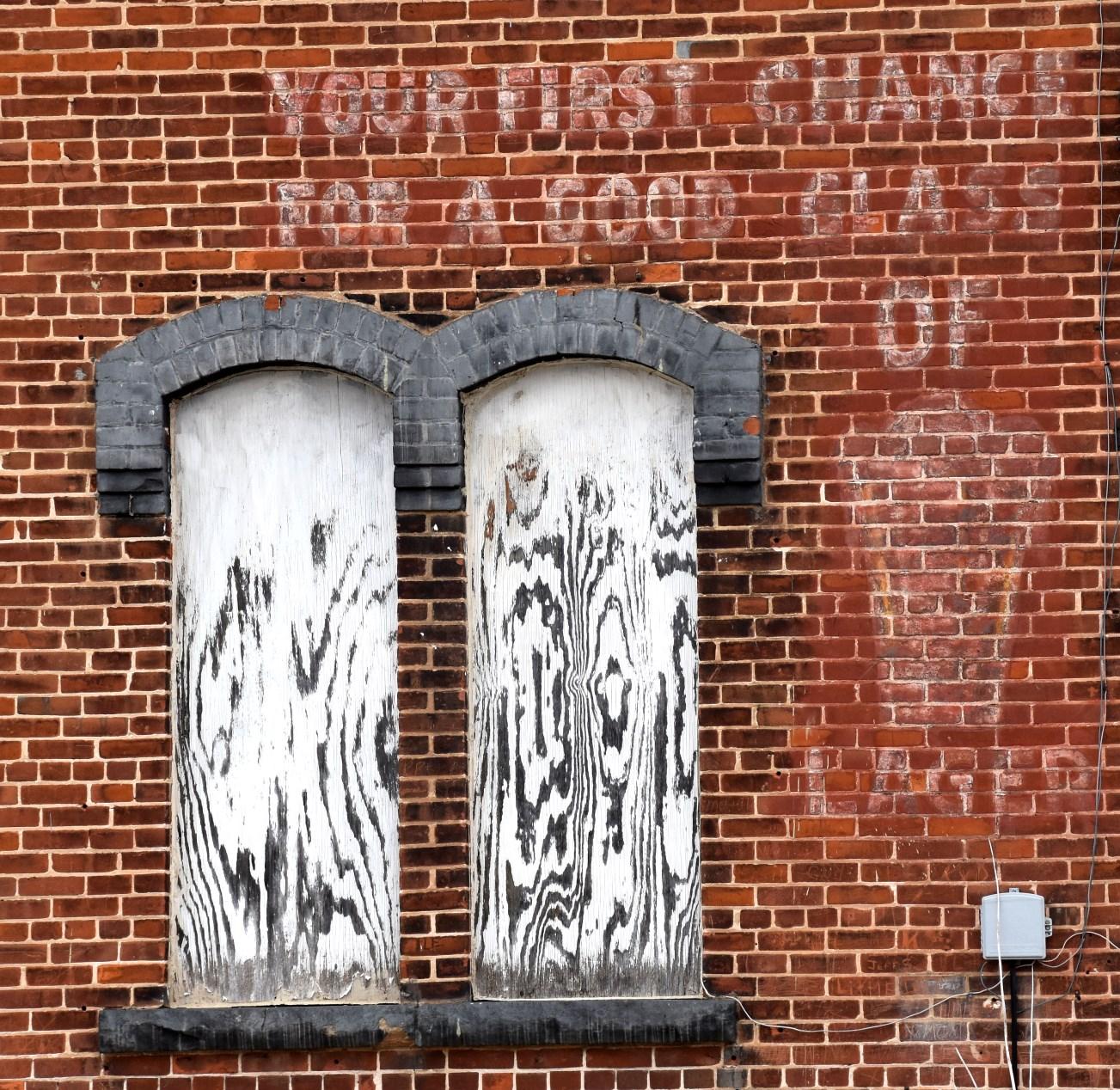



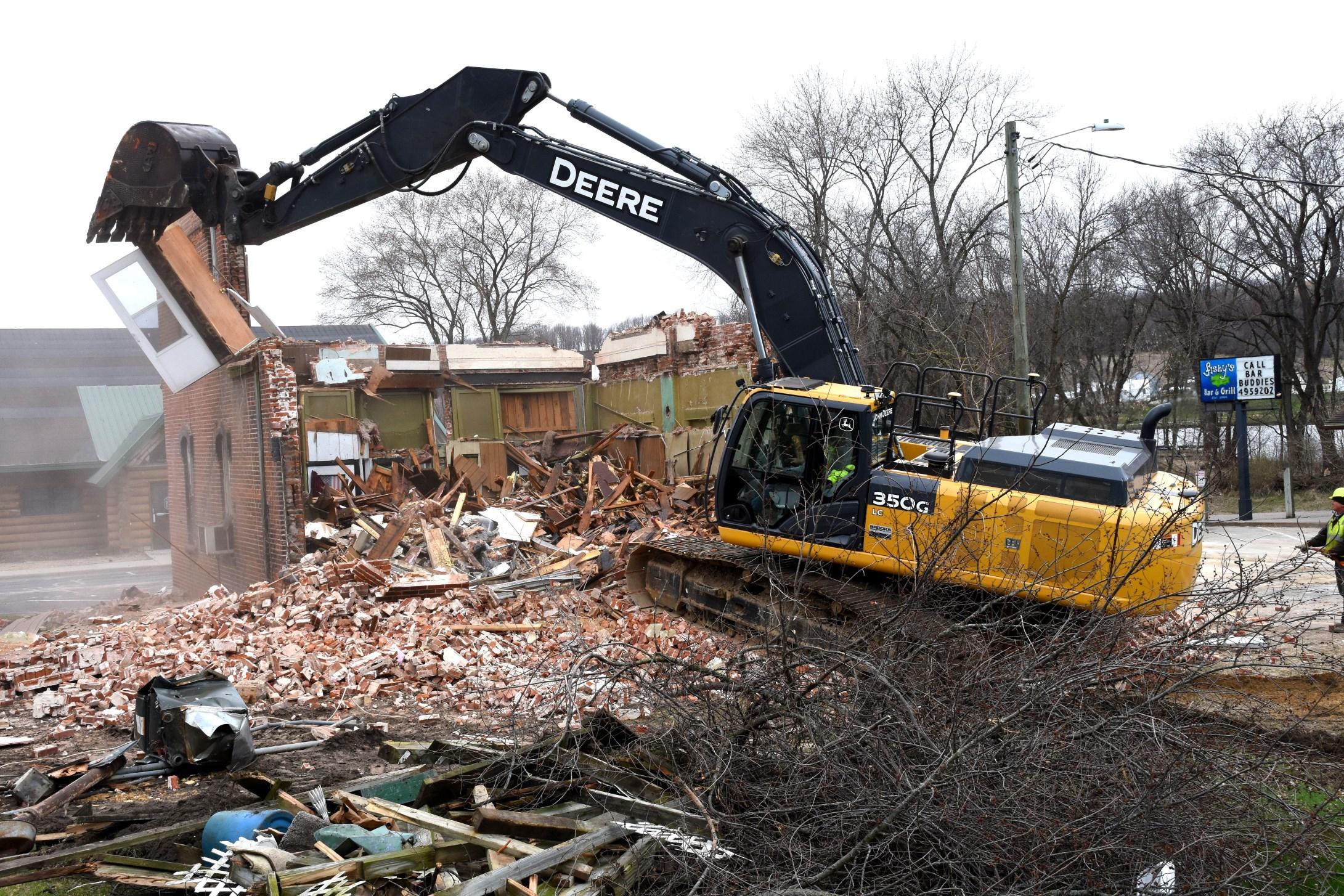



Granny’s Pantry Restaurant Building

This building was built by the Kinney Brothers to house a furniture store. Clyde Lobdell operated a furniture and undertaking parlor there. Helen Lobdell, who was 21 years old, was said to be youngest embalmer in the state. Lobdell also added a pool hall to the building, according to the Reedsburg Free Press Sep. 19, 1929.
Clyde Lobdell opened a barber shop in his building in 1930. Charles Craigo operated the shop for number of years, and from 1943 to 1946 the barber shop was operated by George King.
In December, 1945, Fred Briggs opened a restaurant in the former Lobdell Furniture Store. In 1947 he sold it to Elmer Gramwand, who sold it to Adam Massari around 1950. In 1965 Raymond Borchers and Delores Gudenschwager purchased it. In the early 1970s Harold Leeds took over and renamed it Granny's Pantry.
Merlin Courtier, Fred Kinney, Jack Manville, and Jean Snyder operated the restaurant until the flood of 2018, when it closed permanently. On the far right of the building, there was a small room which was used as an insurance office, and later a reality office. Below is what was left of the lunch counter in 2022.
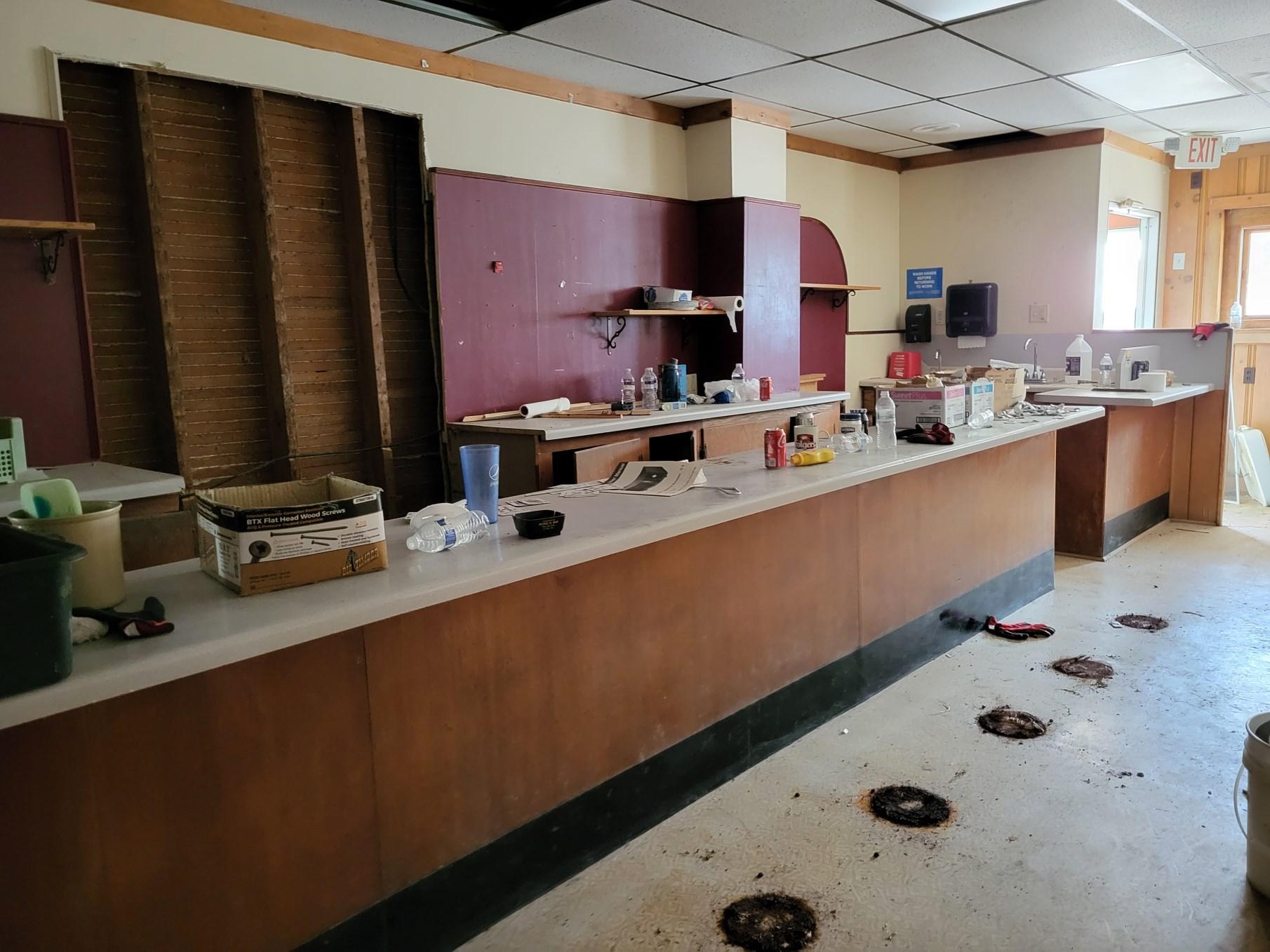





This elevator was located at the rear of the building. When a funeral home was housed here, it was used to bring caskets to the second floor where the deceased was prepared. Then it was lowered back down to the main floor for the visitation and funeral. The elevator was hand operated with ropes and cables.











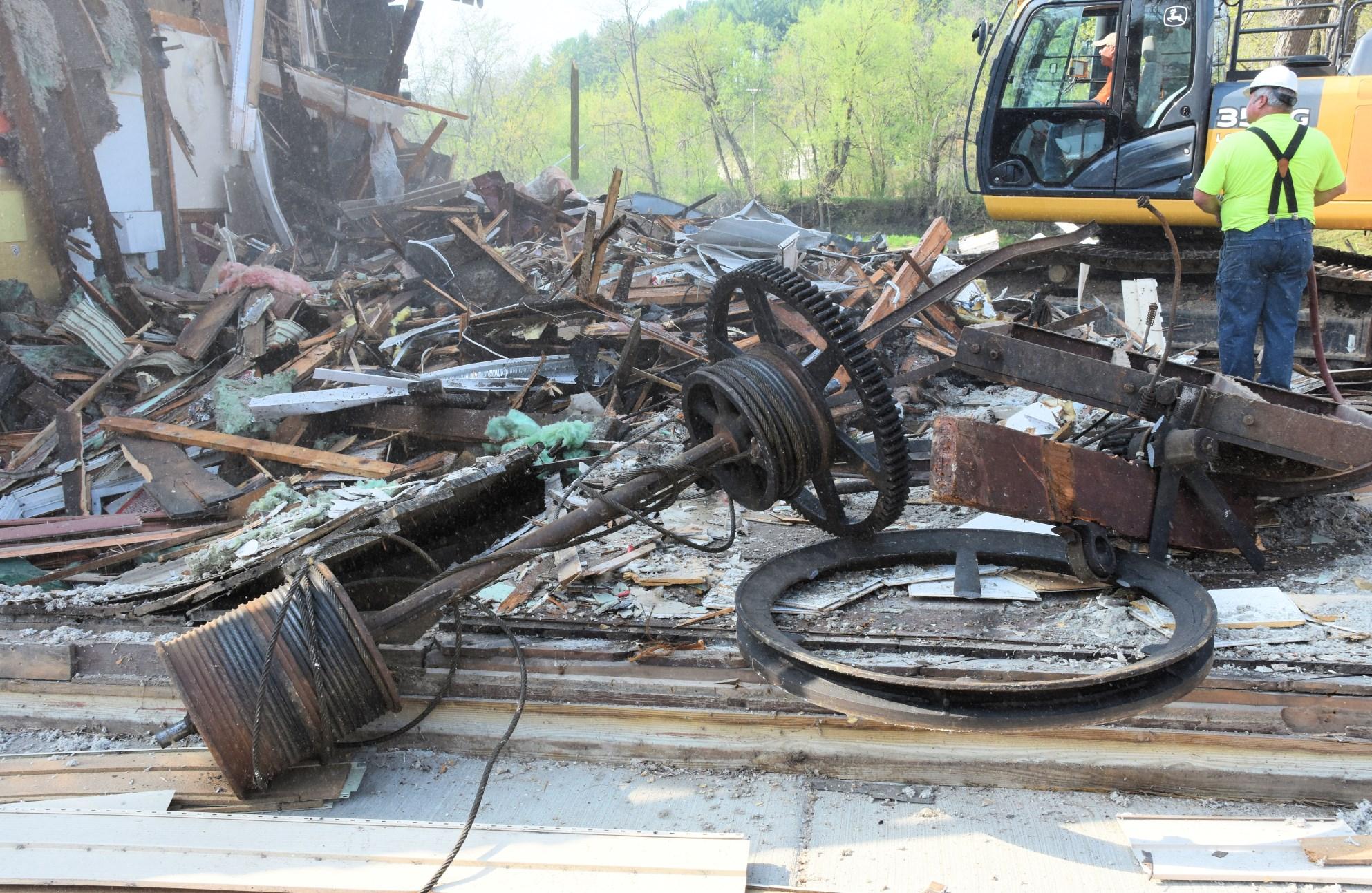


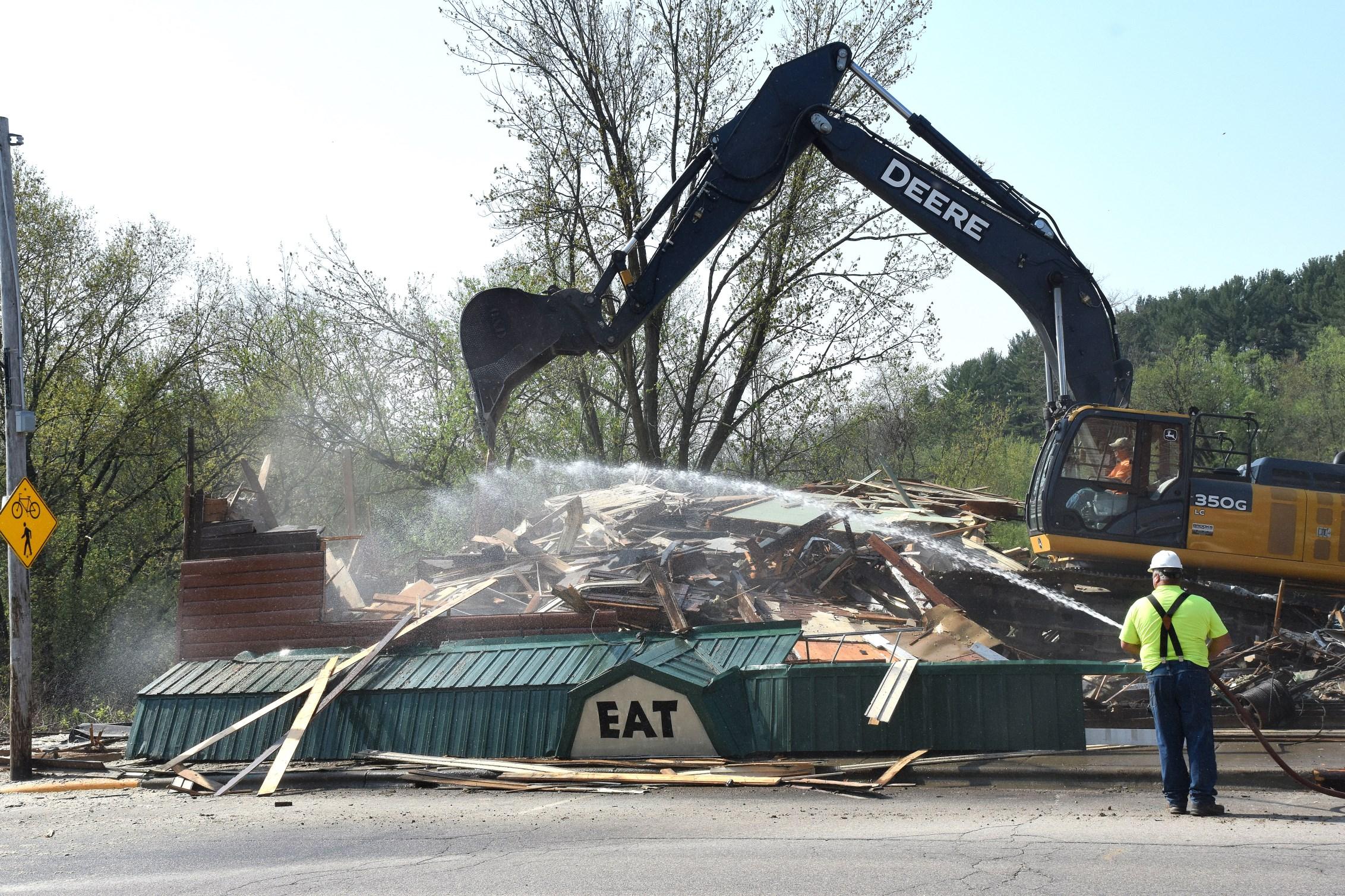

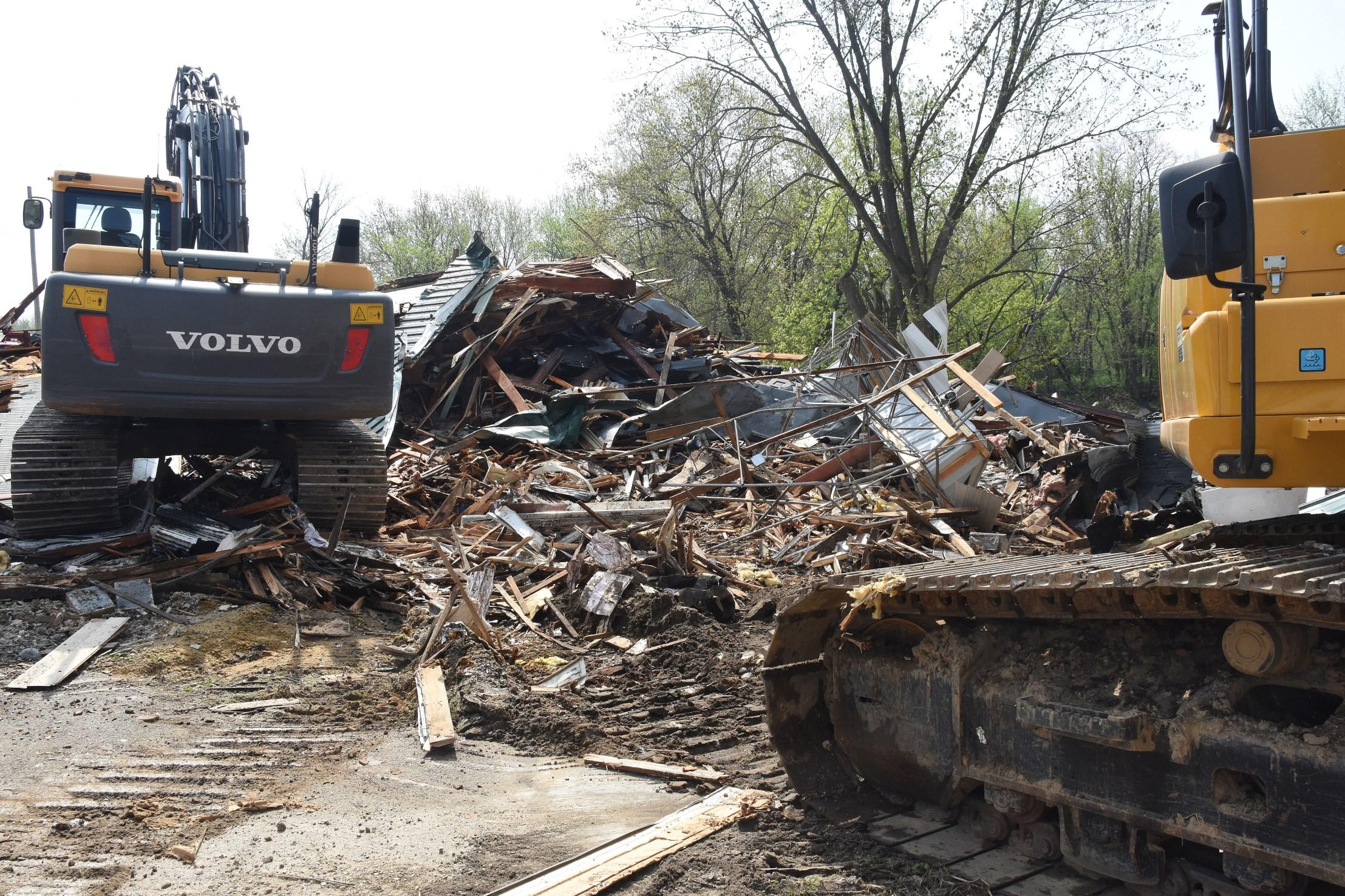


LaValle Electric Light Company


Victor Duddleston, who owned the mill which housed a water-driven generator, also produced electricity for the village. Originally the water wheel was shut down every evening at 11 p.m. Anyone using electric lights after that hour had to rely on kerosene lamps. The LaValle Milling Company produced the electricity for the community from 1912 until May 25, 1970. After that, the village power was supplied by the Oakdale Electric Cooperative.




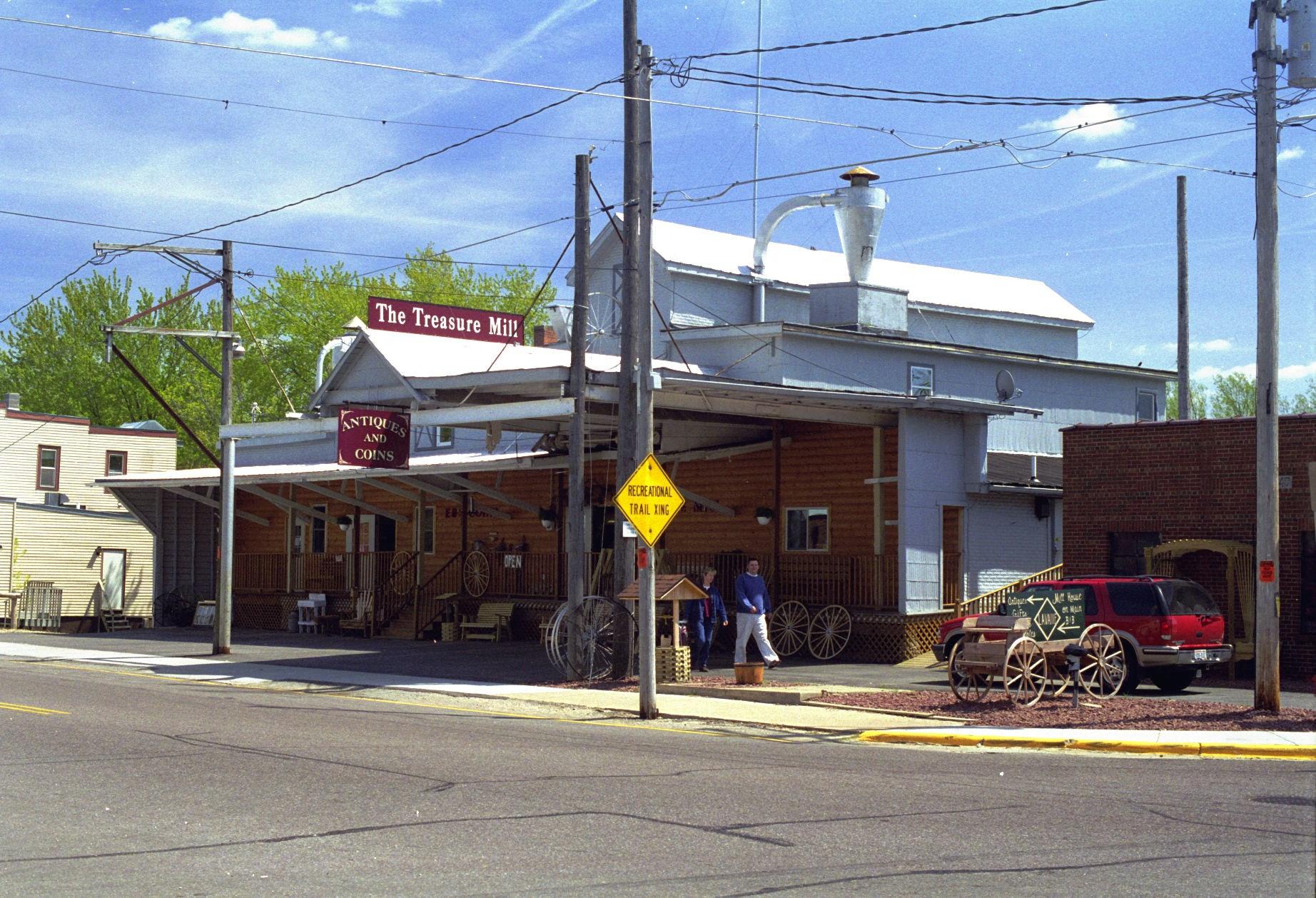
The Mill Dam ca. 2000, before it was taken out in 2001.

